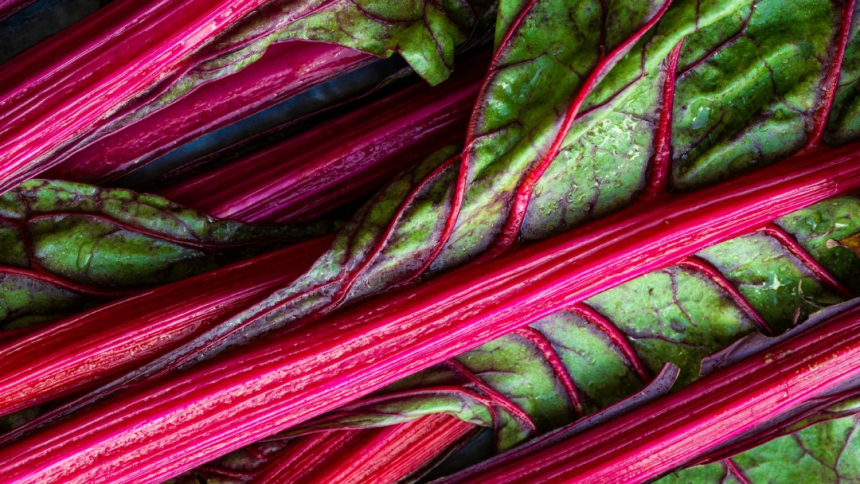
Meet the imposters of the produce section. The fruit and vegetables that act like they belong to one gang, when they secretly run with another. Indeed, their disguises are often so good, you would be hard pressed to spot the difference even at close quarters. Let’s take a closer look under the botanical hood to see if we can’t sort the real deal from the fakers.
What’s the difference anyway?
Botanically speaking, fruit is the mature ovary of a flowering plant, usually containing seeds.
A vegetable, on the other hand, is any other edible part of the plant – leaves, stems, roots, bulbs, even flower buds.
In short, if it has seeds, it’s a fruit. If it doesn’t, and it comes from another part of the plant, it’s a vegetable. Of course, if it were as simple as that, we wouldn’t even be having this discussion.
When we step into the kitchen, we generally label foods by how we use them, not by their botanical make-up. Which is where the identity crisis starts.
Tomato source
Botanically, the tomato is all fruit. A berry, in fact. It grows from a flower and contains seeds. But in the kitchen, the red beauty gets tossed in with the vegetables, salads, savoury sauces and sandwiches. What is fruity about that?
In the United States, some people felt so strongly about where the tomato belonged in this argument (yes, money was at stake), lawyers got involved. In 1893, the Supreme Court declared the tomato a vegetable for tariff purposes; botanical origins be damned.
In Western Australia, we just know we are lucky to have them all year round. Though they are at their juiciest from late spring through to early autumn, we are spoilt for choice – from sweet cherry and grape to rich Roma and terrific Truss. If you’re lucky, you might even spot some heirloom varieties at the local grocer or farmers market. Pair them with a luscious fior di latte for next-level tomato on toast.
Tricky rhubarb
Rhubarb looks like a vegetable, but the sour stalk pops up in pies and crumbles as regularly as apples and pears. Surely, it’s a fruit?
Despite its frequent foray into the dessert department, rhubarb is most definitely a vegetable. It’s the stem of the plant, with no seeds or floral background to speak of. But thanks to a generous sprinkle of sugar and a strong synergy with the aforementioned apples and pears (not to mention strawberries), it’s often mistaken for fruit.
Grown in the South West and Perth Hills, rhuburb favours the milder weather. Look out for it from late autumn into spring. Stew with star anise and vanilla, or bake rhubarb with apples and pears. It also makes a great relish or pickle.
Avocado act
The avocado can get just as confusing in the produce section. Botanically, it’s a fruit. In fact, it’s technically a large berry with a single seed.
But it’s treated more often as a savoury ingredient. Spread the creamy flesh on toast, chop into a salad with snow peas and broccolini, turn it into guacamole, add it to your sushi or sandwich.
(Avocado does work well in cakes and mousse, though, particularly paired with chocolate. Google some recipes to try.)
We grow several varieties in Western Australia, including Hass, Reed and Fuerte. The season kicks off in about August and runs into summer, with fruit from the South West and Wheatbelt leading the charge.
Meet some more pretenders
Just when you thought you had it all figured out, here are some more fruit masquerading as vegetables.
- Pumpkin: Yes, pumpkin. It looks for all the world like a vegetable and is treated like one for the most part, such as in this luscious laksa. But it is a fruit; pumpkins contain seeds and grow from flowers..
- Zucchini (or courgettes): This long green gourd is a close relative to the pumpkin and gives off similar vegetable vibes. But the Cucurbitaceae clan member is also a fruit.
- Peas and beans: You guessed it – fruit! Even the sugar snap peas in your stir-fry. They are seed pods that develop from a flower. Treat them like vegetables all you want, such as this green bean and bacon dish, but they aren’t.
But wait, there’s more. Cucumbers are also often mistaken for vegetables until you think about all those seeds. Same with capsicum, which is closely related to the tomato – and we all know what the tomato is by now, right?
Then there is eggplant or aubergine. It looks for all the world like a vegetable and we treat it as such in the kitchen, but it is a fruit too. Like the tomato, it’s also a berry.
Does all this matter? Unless you’re studying botany, want to impress others with your trivia knowledge, or are a keen gardener, probably not.
When you’re tucking into miso-glazed eggplants or lobster pasta with cherry tomatoes, you won’t care if they are imposters or not. Just eat up and embrace the ambiguity.